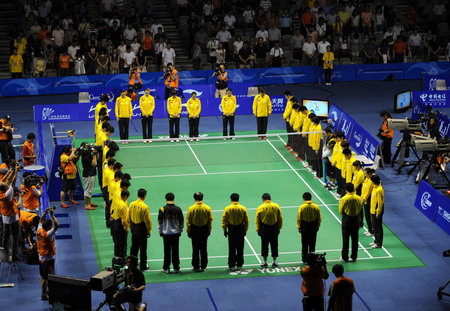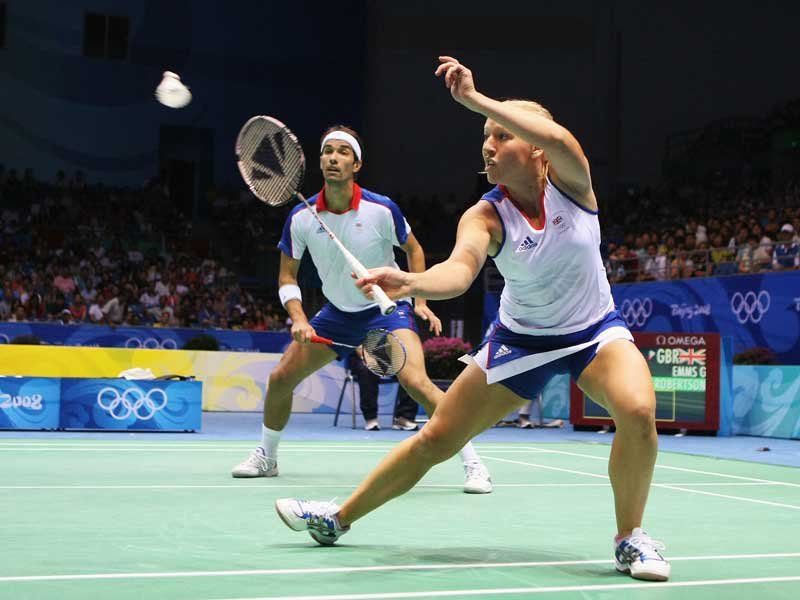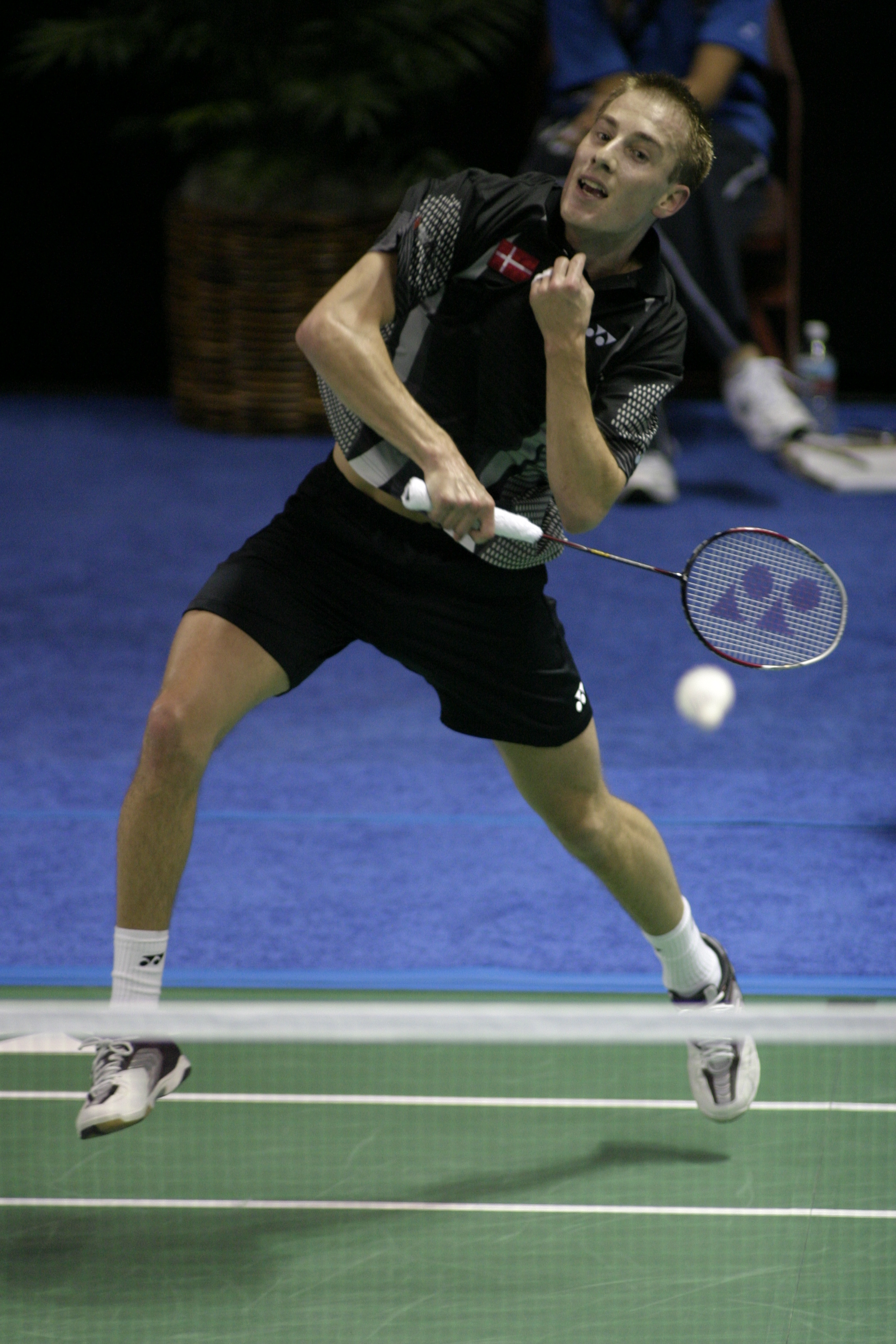
Passing on the legacy: Former national badminton player and Olympic gold medalist Ricky Ahmad Subagja gives a workshop to young shuttlers prior to the Tetra Pak Open 2009 national badminton junior competition in Jakarta on Wednesday. 1,261 young badminton players, aged between 5 and 14 years old, from across the archipelago are participating in the competition. JP/R. Berto Wedhatama
A boy attending the 2009 Tetra Pak Junior Badminton Open looked puzzled as he tried to figure out the name of his favorite shuttler. After a few seconds of hesitation, he said, "Rudy Hartono."
Rudy was indeed a great Indonesian shuttler, having won the prestigious All England Championship eight times in the 60s and 70s, long before the young boy's time.
"Apparently, some badminton juniors today aren't even familiar with the current badminton champs, like Sony *Dwi Kuncoro*, Maria *Kristin*, Markis Kido and the rest of the current squad," said 1996 Atlanta Olympic Games men's doubles gold medalist Ricky Subagja, after a coaching clinic on the sidelines of the Tetra Pak championship.
"It's sad to see youngsters nowadays growing up without a clue of their own badminton idols," said Ricky, a big fan of Lim Swie King.
Dubbed the "King of Smash", Swie King forced Rudy Hartono to give up his All England crown in the all-Indonesian 1976 final.
Ricky pointed out the importance of more tournaments for young shuttlers, as well as coaching sessions and exhibitions, where juniors would get an opportunity to meet and greet their predecessors.
"It was the late great Ferry Sonneville who motivated me before I competed in the Thomas Cup," said Ricky, recalling his debut in the 1992 Thomas Cup.
He said Ferry, who helped Indonesia win the Thomas Cup three straight times - in 1958, 1961 and 1964 - during his playing heyday, came to give encouragement to the players.
"Children will be more inspired and motivated when they meet senior players," said Ricky, who has been the ambassador for the Tetra Pak championship for the five years the tournament has been held.
"Cultivating this spirit among children is important because they have the potential to become the country's next generation of badminton stars."
Ricky, currently head coach and manager of CBN (Cahaya Bulutangkis Nusantara) Batam badminton club, urged the Badminton Association of Indonesia (PBSI) to pay more attention to monitoring the country's badminton talent.
"The national training camp should not be the PBSI's only focus. It should also keep an eye on talent, scouting in the regions, not just in Java," he said.
This year, some 1,261 juniors aged between 5 and 14 years from 18 provinces are participating in the championship, which runs until June 6.
The championship is expected to contribute to the national team. The 2006 winner in the girls' singles event, Rena Suwarno, is now
 The Atlanta Olympics started to raise the sport's profile in the US. The event was a sell-out and became one of the most popular sports. Ex-President Jimmy Carter, Chelsea Clinton, Princess Anne and Paul Newman were among the celebrities who came to watch. David Broder of the Washington Post also came. After seeing the men's doubles finals, he reported: "seeing one of the supreme athletic spectacles of my life".
The Atlanta Olympics started to raise the sport's profile in the US. The event was a sell-out and became one of the most popular sports. Ex-President Jimmy Carter, Chelsea Clinton, Princess Anne and Paul Newman were among the celebrities who came to watch. David Broder of the Washington Post also came. After seeing the men's doubles finals, he reported: "seeing one of the supreme athletic spectacles of my life". Badminton image
Badminton image Badminton player
Badminton player Badminton photo
Badminton photo Badminton player pic
Badminton player pic Badminton women
Badminton women Badminton sydney
Badminton sydney Badminton wall photo
Badminton wall photo Badminton female player
Badminton female player

































